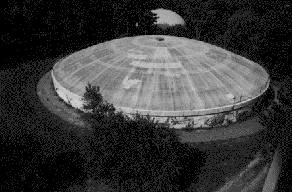A unit of concentration often used when measuring levels of pollutants in air, water, body fluids, etc. One ppm is 1 part in 1,000,000. The common unit mg/liter [see scientific units] is equal to ppm. Four drops of ink in a 55-gallon (208 liters) barrel of water would produce an "ink concentration" of 1 ppm.
One part per billion is 1 part in 1,000,000,000. One drop of ink in one of the largest tanker trucks used to haul gasoline would represent 1 ppb.
The difference between 1 ppm and 1 ppb is important. A prestigious scientific journal once reported the concentration of a substance as 0.5–1.5 ppm. The real value was 0.5–1.5 ppb. The difference between $1 and $1000!

A unit of concentration used to measure vanishingly small levels of pollutants or contaminants in, for example, body fluids. One ppt is 1 part in 1,000,000,000,000. One drop of ink distributed through the water contained in a total of 4 of the 3-million-gallon (>11 million liters) reservoirs pictured would result in a final concentration of 1 ppt.
The remarkable advances in the sensitivity of modern analytical techniques makes it possible to detect some substances at the ppt level whose presence would not have been detected using earlier assay methods.
One ppq is 1 part in 1,000,000,000,000,000 or 1 in 1015.
Even the most modern analytical techniques cannot measure a pollutant such as dioxin in this range. However, mathematical models based on the tiny amounts of dioxin still produced during the manufacture of paper suggest that dioxin is being released in the ppq range by paper mills in the state of Maine (U.S.) Using another mathematical model, the concept of collective dose, the U.S. Fish and Wildlife Service estimated that these undetectable levels of dioxin in river water downstream of one paper mill would kill, or prevent from hatching, as many as six baby bald eagles over a period of five years.
Plausible?| Welcome&Next Search |